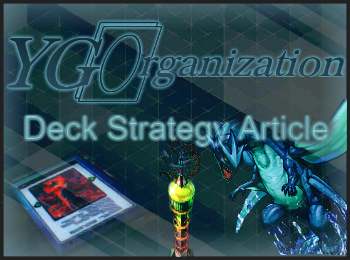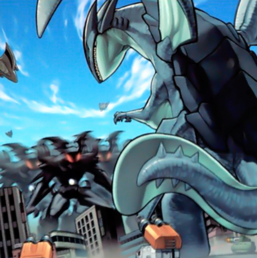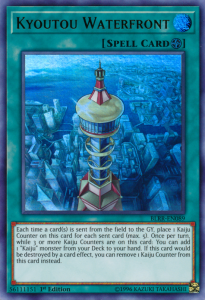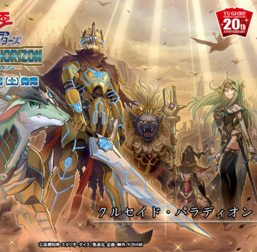Is creating giant monster battles your thing? Check out this strategy of uninterrupted slaughter assisted by another archetype with starpower.

Creating a Frankenstein:
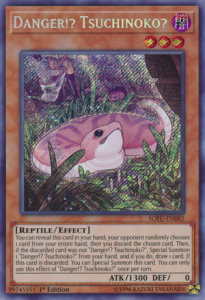 Off the bat, let’s talk about what it takes to create a novel hybrid deck, what I dub as a Frankenstein that has yet to prove its worth as a combination of themes. To create one from scratch, you need two or more themes that have polar opposite strengths, allowing for their weaknesses to be covered by the strengths of the others. The second big requirement? That there is something that ties these themes together.
Off the bat, let’s talk about what it takes to create a novel hybrid deck, what I dub as a Frankenstein that has yet to prove its worth as a combination of themes. To create one from scratch, you need two or more themes that have polar opposite strengths, allowing for their weaknesses to be covered by the strengths of the others. The second big requirement? That there is something that ties these themes together.
To throw a competitive example your way, in today’s metagame, one can see endless amounts of Danger! hybrids combined with just about every competitive archetype under the sun, but there are a couple of key archetypes where they do not appear. The Danger! cards offer a ton of consistency and monster generation for decks that want to dig through the deck quickly to specific combo pieces, and while they have some opportunities with luck to generate massive amounts of card advantage, that is not necessarily their forte. The other big benefit is offering their aid to OTKs, since a Borrelsword Dragon is just as powerful as it has ever been at ending duels at the drop of a dime. Expect me to revisit this hybrid deckbuilding concept later on, for those of you interested in reading the whole article. But we’re not here to talk about Danger all day, we’re here to talk about another TCG-World Premiere theme, our Kaiju overlords, and we will eventually get into a second powerful theme offering their aid to the good fight.
Clashing Monsters from Japan:
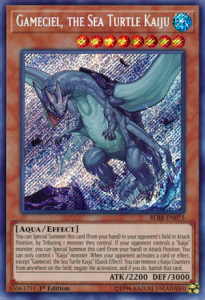 The Kaiju archetype, clearly drawing upon inspiration from Godzilla and all of the media that came with it, is one of the best examples of thematic card design in the game. What do monsters do in Godzilla? Setup massive fights between powerful monsters that end up destroying the city around them. What does the Kaiju archetype do in the game? Setup massive fights between powerful monsters while destroying everything. Sounds about right. Each Kaiju sports a different attribute/type combination that has been neglected in the past by most strategies, but most of you don’t know this theme for their diversity – you know them because they have always been known as the best boss monster removal engine in the game. The main Kaiju monsters share the following effect: You can Special Summon this card (from your hand) to your opponent’s field in Attack Position, by Tributing 1 monster they control. If your opponent controls a “Kaiju” monster, you can Special Summon this card (from your hand) in Attack Position. You can only control 1 “Kaiju” monster.
The Kaiju archetype, clearly drawing upon inspiration from Godzilla and all of the media that came with it, is one of the best examples of thematic card design in the game. What do monsters do in Godzilla? Setup massive fights between powerful monsters that end up destroying the city around them. What does the Kaiju archetype do in the game? Setup massive fights between powerful monsters while destroying everything. Sounds about right. Each Kaiju sports a different attribute/type combination that has been neglected in the past by most strategies, but most of you don’t know this theme for their diversity – you know them because they have always been known as the best boss monster removal engine in the game. The main Kaiju monsters share the following effect: You can Special Summon this card (from your hand) to your opponent’s field in Attack Position, by Tributing 1 monster they control. If your opponent controls a “Kaiju” monster, you can Special Summon this card (from your hand) in Attack Position. You can only control 1 “Kaiju” monster.
In other words, replace something your opponent has with a Kaiju from your hand, summon a Kaiju of your own, then battle it out. But this isn’t the only unique quality of the Kaiju theme, in fact it is probably the most-used competitive archetype featuring the counters mechanic ever designed. On top of their summoning capabilities, each main Kaiju also can remove counters from anywhere on the field to activate powerful effects, ranging from negation to acting as a pseudo-Raigeki. While this mechanic was never fully utilized by Kaijus in the competitive scene, it is finally starting to get noticed by archetypes that can easily make Saryuja Skull Dread, allowing for multiple negates with the same monster in decks hoping to disrupt the opponent from making significant plays. But so far, I’ve just spent time on an overview of the Kaiju theme in terms of how it has historically been used; it’s time we cover the stars of the deck in depth.
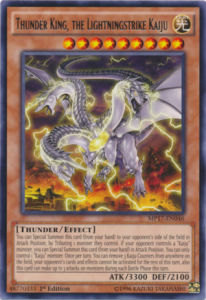 First up is everyone’s favorite turtle, Gameciel, the Sea Turtle Kaiju. Sporting the weakest ATK of the main Kaiju but the highest DEF, this monster has always been the prime gift to offer to the opponent. All of the other Kaiju monsters can run over it in battle, so unless you have Kaiju counters on the field, it is the most useless. However, get this monster to your side of the field while counters are out and you can start negating any effects your opponent attempts to activate. Also, due to the 1 Kaiju hard lockout, your opponent can’t even rely on their own Kaiju to get over this disrupter. Next on the docket is Dogoran, the Mad Flame Kaiju. By removing 3 counters on your turn, you can wipe out monsters your opponent controls. Not the greatest effect for responding to an opponent, but it is great at providing more OTK power. In the link format, another Kaiju star can rise to be pretty awesome and that is Radian, the Multidimensional Kaiju. By removing 2 counters on your turn, you get a Radian token on your field with the same ATK power as Radian (2800), but you should just consider this as free Link material (or just another body for an OTK). Lastly in our Kaiju spotlight is Thunder King, the Lightningstrike Kaiju. Remove 3 counters and you get to lock your opponent out of responding for the rest of the turn. If that wasn’t good enough, he also gets to attack 3 times. Yes, he’s that awesome and a cornerstone in many of the main Turn 2 OTK combos open to this deck.
First up is everyone’s favorite turtle, Gameciel, the Sea Turtle Kaiju. Sporting the weakest ATK of the main Kaiju but the highest DEF, this monster has always been the prime gift to offer to the opponent. All of the other Kaiju monsters can run over it in battle, so unless you have Kaiju counters on the field, it is the most useless. However, get this monster to your side of the field while counters are out and you can start negating any effects your opponent attempts to activate. Also, due to the 1 Kaiju hard lockout, your opponent can’t even rely on their own Kaiju to get over this disrupter. Next on the docket is Dogoran, the Mad Flame Kaiju. By removing 3 counters on your turn, you can wipe out monsters your opponent controls. Not the greatest effect for responding to an opponent, but it is great at providing more OTK power. In the link format, another Kaiju star can rise to be pretty awesome and that is Radian, the Multidimensional Kaiju. By removing 2 counters on your turn, you get a Radian token on your field with the same ATK power as Radian (2800), but you should just consider this as free Link material (or just another body for an OTK). Lastly in our Kaiju spotlight is Thunder King, the Lightningstrike Kaiju. Remove 3 counters and you get to lock your opponent out of responding for the rest of the turn. If that wasn’t good enough, he also gets to attack 3 times. Yes, he’s that awesome and a cornerstone in many of the main Turn 2 OTK combos open to this deck.
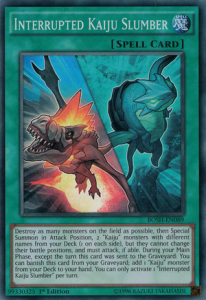 Supporting these monsters is a suite of powerful Spell cards that let the Kaiju battles shine as the main attraction for the deck. Interrupted Kaiju Slumber, finally released from its chains and escaping the Forbidden/Limited list, is the best support card and first up on my list to cover. First, it is a Dark Hole, killing all monsters on the field, then you put a Kaiju on each player’s field from your deck, forcing them to battle during the turn it is activated. You literally are destroying everything just to setup your clash of the titans. Unfortunately your opponent can throw a wrench in your plans if they saved an Ash Blossom & Joyous Spring, but that shouldn’t stop you from trying. Slumber also lets you banish it from your GY to get a new Kaiju to hand, allowing you to continue your boss-eliminating shenanigans on future turns.
Supporting these monsters is a suite of powerful Spell cards that let the Kaiju battles shine as the main attraction for the deck. Interrupted Kaiju Slumber, finally released from its chains and escaping the Forbidden/Limited list, is the best support card and first up on my list to cover. First, it is a Dark Hole, killing all monsters on the field, then you put a Kaiju on each player’s field from your deck, forcing them to battle during the turn it is activated. You literally are destroying everything just to setup your clash of the titans. Unfortunately your opponent can throw a wrench in your plans if they saved an Ash Blossom & Joyous Spring, but that shouldn’t stop you from trying. Slumber also lets you banish it from your GY to get a new Kaiju to hand, allowing you to continue your boss-eliminating shenanigans on future turns.
Next up is the Field spell for the theme – Kyoutou Waterfront. This is the first receptacle for counters in the theme, quickly gaining a counter for each card send from the field to the GY, up to 5 counters at any given point. Additionally, you get to add a Kaiju from deck to hand whenever it has 3 or more counters, ensuring your hand has the monsters you need for the big fights. And lastly, it can just protect itself if your opponent tries to drop some sort of destruction effect, so it isn’t so easy to disrupt. The last backrow support card worth mentioning is The Kaiju Files – this is a card that gives you more counters while also flowing into the exact Kaiju you need at any moment. First, it gets counters when you summon a Kaiju from hand or GY, which is the Perfect prep for your not-so-gentle giants. Then, you can destroy a Kaiju on either field to replace it with a Kaiju with a different name from the deck. The biggest takeaway from the second effect should be “I can attack with a Thunder King, then destroy it in MP2 to bring out a Gameciel in def if need be”, because that is one of the best uses of the card.
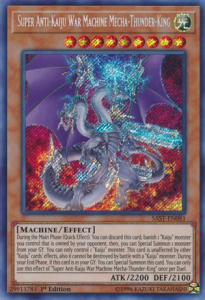 That brings us to our final introduction to the Kaiju, the Anti-Kaiju support cards! Super Anti-Kaiju War Machine Mecha-Dogoran (such a mouthful) was the first of this sub-theme released in the game, allowing you to slowly build up an extremely powerful attacker as it absorbs your fallen Kaiju from the GY to gain ATK power. Other than that, he is pretty bad to be frank. I’m not including this paragraph to talk about him, I want to talk about the brand new World Premiere from Savage Strike – Super Anti-Kaiju War Machine Mecha-Thunder-King. If you thought the first one had a long name… get a load of this triple-hyphenated line of alphabet soup. Its first effect seems very out of place in a Kaiju build, as it has to rely on banishing a Kaiju your opponent owns. This effect is to try and entice duelists to use it to counter other duelists using Kaijus just for monster removal, as it can trade their summoned Kaiju for any monster in your GY. The other effect lets you summon itself from your GY during the EP once per duel, giving it a bit more longevity and usefulness. But the best effect is hidden in a short line in the middle of the text: This card is unaffected by other “Kaiju” cards’ effects, also it cannot be destroyed by battle with a “Kaiju” monster. Combined with Thunder King’s triple attacks, all it would take is a couple counters and a Slumber, as you can give your opponent the Anti-Kaiju and yourself a Thunder King, buff your dude up with an Honest or Leeching the Light and the duel is over. For like the millionth time, the Kaijus have OTK power.
That brings us to our final introduction to the Kaiju, the Anti-Kaiju support cards! Super Anti-Kaiju War Machine Mecha-Dogoran (such a mouthful) was the first of this sub-theme released in the game, allowing you to slowly build up an extremely powerful attacker as it absorbs your fallen Kaiju from the GY to gain ATK power. Other than that, he is pretty bad to be frank. I’m not including this paragraph to talk about him, I want to talk about the brand new World Premiere from Savage Strike – Super Anti-Kaiju War Machine Mecha-Thunder-King. If you thought the first one had a long name… get a load of this triple-hyphenated line of alphabet soup. Its first effect seems very out of place in a Kaiju build, as it has to rely on banishing a Kaiju your opponent owns. This effect is to try and entice duelists to use it to counter other duelists using Kaijus just for monster removal, as it can trade their summoned Kaiju for any monster in your GY. The other effect lets you summon itself from your GY during the EP once per duel, giving it a bit more longevity and usefulness. But the best effect is hidden in a short line in the middle of the text: This card is unaffected by other “Kaiju” cards’ effects, also it cannot be destroyed by battle with a “Kaiju” monster. Combined with Thunder King’s triple attacks, all it would take is a couple counters and a Slumber, as you can give your opponent the Anti-Kaiju and yourself a Thunder King, buff your dude up with an Honest or Leeching the Light and the duel is over. For like the millionth time, the Kaijus have OTK power.
Bringing the Support Actors into the Fray:
The new format in the TCG is cuthroat, brutal, and very much a ‘go 2nd’ format. With nearly 0 FTKs left in the game and so much OTK power available to just about every deck, the goal of most builds is to be able to break boards and go for the OTK on their first turn. This is partially the reason why the Lunalight Danger build was so effective (and such a great choice) in the first YCS of the format – it had the OTK power to break boards, even without running any Polymerization or Lunalight Fusion, especially in a tournament with a low showing out of Altergeist and other control strategies. Now, not to repeat myself again so soon, but the key characteristics that the Kaiju bring to the table is that they have unparalleled monster removal capabilities and their OTK strength on the back of giant monster fights.
This might sound perfect right off the bat with our new format underway, but we need to consider everything before picking a good archetype to pair with them. Returning to the concept of building a good hybrid deck that I touched upon in this first paragraph in the article, we will need to find an archetype that provides consistency, backrow control, and in-turn destruction. It would also help if we had a theme that could make full use of the Normal Summon, since Kaiju’s don’t really need it at all. Additionally, it could help to grab a theme that could replenish the hand after you blow everything on making the best monster battle you can. Last but not least, we need a theme that can open the duel and go first, if the opponent wins the dice roll and gets the choice of who gets to have the first chance to OTK. Have any ideas yet? Well, if you haven’t clicked the button yet and spoiled yourself, here’s the big reveal: the best second archetype to pair with these Kaiju is not Crusadia as you might have imagined, but instead is the Trickstars.
Open the first spoiler to access the rest of the body of the article. The second spoiler contains the Decklist if you only care about that.
Spoiler
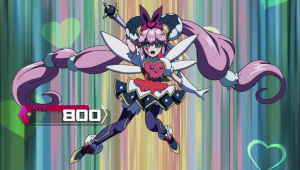
Trickstars Unite:
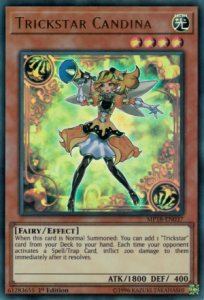 Love them or hate them, the Trickstar archetype is one of the coolest archetypes to be added to the game for quite some time, most importantly for how they can revitalize old strategies that were never on par for the speed of the game. Out of all the archetypes to be added in the VRAINS era so far, I have to say that the Trickstar archetype is one of my favorite, and I’ve been chomping at the bit to write about them for quite some time now. My passion for this theme boils down to these four reasons:
Love them or hate them, the Trickstar archetype is one of the coolest archetypes to be added to the game for quite some time, most importantly for how they can revitalize old strategies that were never on par for the speed of the game. Out of all the archetypes to be added in the VRAINS era so far, I have to say that the Trickstar archetype is one of my favorite, and I’ve been chomping at the bit to write about them for quite some time now. My passion for this theme boils down to these four reasons:
1) It is an anime theme that was able to hold its own in the competitive scene.
This may come as a surprise to be near the top of my list, but very rarely do anime themes stand a chance in the meta. Designing cards for an anime requires introducing many situational effects, because scripted duels would not be interesting to watch unless the protagonists were constantly backed into a corner and having to play out of it. Just when you think they’re about to lose, they pull out one card to get them back in the game. So, when these situational cards are introduced to the OCG and TCG, many of them simply aren’t usable or enticing to a competitive duelist. VRAINS has really bucked this trend, with both Gouki and Trickstar seeing play even at the highest level, and the best part about it was that you didn’t need to introduce brand new OCG/TCG cards to tie those themes together. To be clear, this isn’t to say that anime themes have never been meta before, but rather, it’s just a refreshing development to have a competitive but not over-dominant anime archetype.
2) It is a burn deck that still gives the opponent agency.
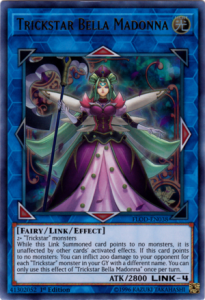 For pretty much the entirety of the game, there has never been a good and healthy burn archetype. Or alt win condition archetype, but I won’t go into that discussion here. Sure, Volcanics existed as the burn archetype, but that theme never was good due to its burn elements. And while chain burn and what I call ‘Simochi burn’ existed, these deck strategies did not surround an archetype, alongside other problems. Chain burn provided the pilot much agency to try and play extremely well to win the duel, but left the opponent little options to respond, and Simochi burn is just a deck where you either get the combo you need and win, or you fail spectacularly. In both cases, it was a deck noone liked to face, because it either made you feel like you had no agency to stop them, or that the duel felt like it just came down to the chance of what hand was drawn. For Trickstars, you watch your life tick away as each action could have an impact on your secondary resource – LP. Each card added to your hand might be an increase in card advantage, but it will be paired with a corresponding decrease if a Trickstar Lycoris is on the field. As a result, a Trickstar’s opponent has the option to play around some of the burn damage, hence agency, but the Trickstar player can also run more options to disrupt the opponent while burning them, such as Trickstar Reincarnation, resulting in agency for themselves as well.
For pretty much the entirety of the game, there has never been a good and healthy burn archetype. Or alt win condition archetype, but I won’t go into that discussion here. Sure, Volcanics existed as the burn archetype, but that theme never was good due to its burn elements. And while chain burn and what I call ‘Simochi burn’ existed, these deck strategies did not surround an archetype, alongside other problems. Chain burn provided the pilot much agency to try and play extremely well to win the duel, but left the opponent little options to respond, and Simochi burn is just a deck where you either get the combo you need and win, or you fail spectacularly. In both cases, it was a deck noone liked to face, because it either made you feel like you had no agency to stop them, or that the duel felt like it just came down to the chance of what hand was drawn. For Trickstars, you watch your life tick away as each action could have an impact on your secondary resource – LP. Each card added to your hand might be an increase in card advantage, but it will be paired with a corresponding decrease if a Trickstar Lycoris is on the field. As a result, a Trickstar’s opponent has the option to play around some of the burn damage, hence agency, but the Trickstar player can also run more options to disrupt the opponent while burning them, such as Trickstar Reincarnation, resulting in agency for themselves as well.
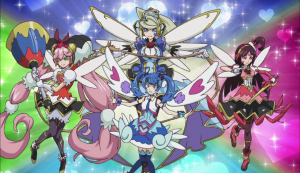
3) Despite being burn-centric, it is not a linear deck.
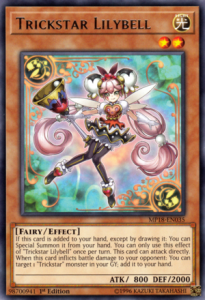 This will probably be the point that most people disagree with me on, but the Trickstar theme is not too linear of a deck to play, outside of the competitive turn 1 plays. You can definitely build them bare-bones to focus around Trickstar Lycoris and Trickstar Reincarnation, but you also can use them in a Link spam fashion with various additional archetype members that can all pull their weight in some fashion. You can even employ Honest as well if you really want to play them as an OTK variant. Since the deck can search all of their cards, off of a single Normal Summon of Trickstar Candina (or all their monsters off of Trickstar Light Stage), then you have the opportunity to do a variety of plays depending on the opening. Similar in playstyle to the Spellbook archetype, all of your options come out of one of two cards, each which search the other. In short, it may be a burn archetype, but it does not require the pilot to go all-in on burn damage as the only win condition, because it is so non-linear.
This will probably be the point that most people disagree with me on, but the Trickstar theme is not too linear of a deck to play, outside of the competitive turn 1 plays. You can definitely build them bare-bones to focus around Trickstar Lycoris and Trickstar Reincarnation, but you also can use them in a Link spam fashion with various additional archetype members that can all pull their weight in some fashion. You can even employ Honest as well if you really want to play them as an OTK variant. Since the deck can search all of their cards, off of a single Normal Summon of Trickstar Candina (or all their monsters off of Trickstar Light Stage), then you have the opportunity to do a variety of plays depending on the opening. Similar in playstyle to the Spellbook archetype, all of your options come out of one of two cards, each which search the other. In short, it may be a burn archetype, but it does not require the pilot to go all-in on burn damage as the only win condition, because it is so non-linear.
4) It adds new life into certain strategies that really needed the boost.
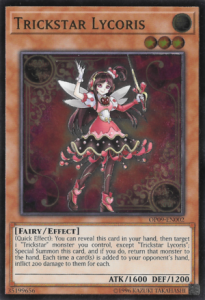 Trickstar is the perfect example of an archetype that can boil down to an engine, because they have such versatility. Reincarnation provides some unique hand disruption capabilities that no other deck really had, other than Dark World back in the day. Lycoris applies pressure to the opponent to encourage them to just stop searching or drawing endlessly, and the combination of the two provides some hefty damage from the getgo as well as information on how to respond to the rest of the plays your opponent might be making. For any theme that needs a backbone of consistency but doesn’t rely upon the Normal Summon, Trickstar can be the way to go. In the case of this article, these stars open their stage to the Kaiju to truly shine bright through their OTKs.
Trickstar is the perfect example of an archetype that can boil down to an engine, because they have such versatility. Reincarnation provides some unique hand disruption capabilities that no other deck really had, other than Dark World back in the day. Lycoris applies pressure to the opponent to encourage them to just stop searching or drawing endlessly, and the combination of the two provides some hefty damage from the getgo as well as information on how to respond to the rest of the plays your opponent might be making. For any theme that needs a backbone of consistency but doesn’t rely upon the Normal Summon, Trickstar can be the way to go. In the case of this article, these stars open their stage to the Kaiju to truly shine bright through their OTKs.

Spoiler
Explaining the Synergy:
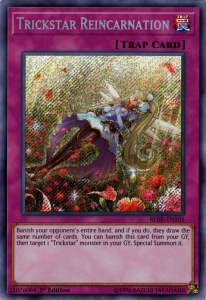 The absolute best part of this deck is that each engine works together rather seamlessly to win the duel. Each side of the deck has ridiculous power combos that can win the duel on their own if you draw into them, but even if they don’t, each side ensures the normal shenanigans of the other can go off unimpeded. For the case of the Trickstar, you have access to the Droll & Lock Bird / Trickstar Reincarnation opening that can end a duel before it really starts. This is an especially good combo now that more decks are turning to Pot of Extravagance, as they cannot set their hand before doing any searching to avoid the combo. The lines between the two themes start to get blurred when you consider the great synergy between Kyoutou Waterfront and link summoning, as a simple Trickstar link combo can quickly generate enough counters to start searching more Kaiju to add to your arsenal.
The absolute best part of this deck is that each engine works together rather seamlessly to win the duel. Each side of the deck has ridiculous power combos that can win the duel on their own if you draw into them, but even if they don’t, each side ensures the normal shenanigans of the other can go off unimpeded. For the case of the Trickstar, you have access to the Droll & Lock Bird / Trickstar Reincarnation opening that can end a duel before it really starts. This is an especially good combo now that more decks are turning to Pot of Extravagance, as they cannot set their hand before doing any searching to avoid the combo. The lines between the two themes start to get blurred when you consider the great synergy between Kyoutou Waterfront and link summoning, as a simple Trickstar link combo can quickly generate enough counters to start searching more Kaiju to add to your arsenal.
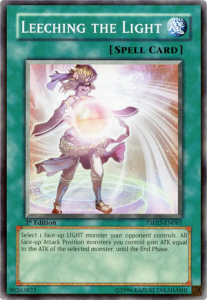 On the flip side, running the OTK Kaiju variant with Leeching the Light requires the ability to spam monsters to the field easily to make the most of it, and a single Candina into Corobane or Lilybell alongside Leeching and one of your LIGHT Kaijus is easily game. Then on the Kaiju engine, the ability to loop through Kaiju like noone’s business and get link material continuously to the field is great. Turn a Trickstar and your initial Kaiju into a Link monster, then bring out another Kaiju and continue the link chain. This is especially good now that we have Underclock Taker in the game, as you can do some pretty great combos alongside a Taker and any of your powerful Kaiju.
On the flip side, running the OTK Kaiju variant with Leeching the Light requires the ability to spam monsters to the field easily to make the most of it, and a single Candina into Corobane or Lilybell alongside Leeching and one of your LIGHT Kaijus is easily game. Then on the Kaiju engine, the ability to loop through Kaiju like noone’s business and get link material continuously to the field is great. Turn a Trickstar and your initial Kaiju into a Link monster, then bring out another Kaiju and continue the link chain. This is especially good now that we have Underclock Taker in the game, as you can do some pretty great combos alongside a Taker and any of your powerful Kaiju.
The other thing to highlight about this synergy is that this deck is adaptable – it can go either first OR second. No matter whether you are facing an OTK-thirsty opponent or you lose the dice roll and are forced to go first, you have a play to shoot for. Having a 25.70% chance of opening the Reincarnation/Droll combo can basically give you an automatic win in a quarter of your duels, but worst comes to worst, you can always just sit on a Candina with a Corobane in hand, hoping for the best if you really get a bad hand. Going second is this deck’s true strength though, as you can wipe out the best disruptor your opponent lays down on the field with a Kaiju from the hand, then either go for a Slumber OTK or unleash Trickstar things.
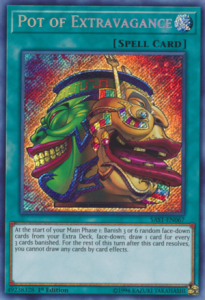 This also means that you do not need to run 5 million handtraps, as you should be able to OTK through any field (even Phantom Knight-centered strategies built to drop an Outer Entity Azathot on your turn), and can focus more on making your deck as toolboxy as possible with different Kaiju names and all of the Trickstar support suite. Finally, the last big piece of synergy is that even though Trickstars do love the extra deck, they don’t necessarily require its use in a deck that relies on Kaiju’s going for the throat to win. So, you can definitely employ the new Pot of Extravagance to great effect, giving easy card advantage to go for the OTK unlike some other main OTK themes that can end up accidentally banishing an important combo piece. But enough with my theory-crafting, you probably want to get to a decklist by now – let’s do it!
This also means that you do not need to run 5 million handtraps, as you should be able to OTK through any field (even Phantom Knight-centered strategies built to drop an Outer Entity Azathot on your turn), and can focus more on making your deck as toolboxy as possible with different Kaiju names and all of the Trickstar support suite. Finally, the last big piece of synergy is that even though Trickstars do love the extra deck, they don’t necessarily require its use in a deck that relies on Kaiju’s going for the throat to win. So, you can definitely employ the new Pot of Extravagance to great effect, giving easy card advantage to go for the OTK unlike some other main OTK themes that can end up accidentally banishing an important combo piece. But enough with my theory-crafting, you probably want to get to a decklist by now – let’s do it!
Sample Decklist:
Monsters (18):
| Dogoran, the Mad Flame Kaiju
| Gameciel, the Sea Turtle Kaiju
| Jizukiru, the Star Destroying Kaiju
| Radian, the Multidimensional Kaiju
||| Thunder King, the Lightningstrike Kaiju
| Super Anti-Kaiju War Machine Mecha-Thunder-King
||| Droll & Lock Bird
||| Trickstar Candina
| Trickstar Lilybell
|| Trickstar Lycoris
| Trickstar CorobaneSpells (19):
| Kyoutou Waterfront
||| Interrupted Kaiju Slumber
||| The Kaiju Files
||| Pot of Extravagence
||| Leeching the Light
|| Terraforming
||| Trickstar Light Stage
| Trickstar Live StageTraps (3):
||| Trickstar ReincarnationExtra Deck:
| Borreload Dragon
| Akashic Magician
| Borrelsword Dragon
|| Knightmare Cerberus
|| Knightmare Phoenix
|| Trickstar Bloom
| Knightmare Unicorn
| Knightmare Mermaid
| Knightmare Gryphon
| Trickstar Divaridis
| Trickstar Holly Angel
| Underclock Taker
Test Duel Logs:
I continued this new section for further audience testing, so once again I’ve included the following are play-by-play examples from actual test duels. If you do choose to read this section, let me know in comments on our social media pages or in a PM on Discord if you like this format and would like to see it continued in future articles, as I will soon be making the decision to continue or stop writing these, as they are a significant investment of time to compile decent examples and create the transcripts.
Duel 1 – Ballpark Insect
Spoiler
Opened: Gameciel, the Sea Turtle Kaiju, Interrupted Kaiju Slumber, Thunder King, the Lightningstrike Kaiju, Jizukiru, the Star Destroying Kaiju, Trickstar Reincarnation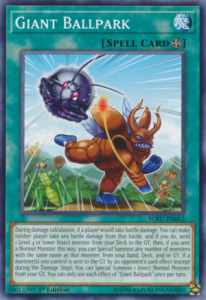 Opponent went first, opening passively with a Giant Ballpark and 1 set monster.
Opponent went first, opening passively with a Giant Ballpark and 1 set monster.
Began my turn, drawing Trickstar Light Stage. First I activated Slumber, destroying their set Resonance Insect and summoning Radian, the Multidimensional Kaiju (theirs) and Super Anti-Kaiju War Machine Mecha-Thunder-King (mine). Resonance activated, adding Super Armored Robot Armed Black Iron “C” to their hand. Next, activated Light Stage grabbing Candina which then was summoned and searched out Trickstar Lilybell which then summoned itself to my field. Using Lily and Mecha-TK, I link summoned Underclock Taker, then Special Summoned Thunder King from hand to the zone it pointed to. Next, I reduced Radian’s ATK to 0 with Underclock, then Link summoned again with Thunder King and Candina to bring out Knightmare Phoenix. By discarding Recincarnation, Ballpark was destroyed, then I drew Droll & Lock Bird. Summoned Jizukiru from hand, then entered battle phase. Jizukiru attacked over Radian, then Underclock and Phoenix attacked directly for a total of 6200 damage. Then I used Reincarnation’s GY effect, banishing itself to summon back Candina and attacking directly for game.
Duel 2 – Destiny HERO Zombie World
Spoiler
Opened: Radian, the Multidimensional Kaiju, Dogoran, the Mad Flame Kaiju, Leeching the Light, Thunder King, the Lightningstrike Kaiju, Leeching the Light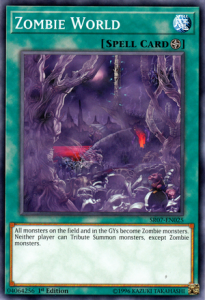 Opponent went first, activated Zombie World, then Normal Summoned Glow-Up Bloom. Next they link summoned Linkuriboh, triggering Bloom’s effect to Special Summon Doomking Balerdroch from the deck. Next, they Link Summoned Vampire Sucker, then set a card and ended their turn.
Opponent went first, activated Zombie World, then Normal Summoned Glow-Up Bloom. Next they link summoned Linkuriboh, triggering Bloom’s effect to Special Summon Doomking Balerdroch from the deck. Next, they Link Summoned Vampire Sucker, then set a card and ended their turn.
Began my turn, drawing Terraforming. The opponent brought back Doomking during the Standby Phase and drew a card due to Sucker. I activated Terraforming, searching out Light Stage, which then was activated and searched out Candina. Next, I used Light Stage’s 2nd effect, preventing the set card from being activated during the turn. Then I tributed his Doomking for the Special Summon of Thunder King to my opponent’s field. Next came the Normal Summon of Candina, which brought Lilybell to the hand and then field via its effect. Next I summoned Radian inherently, and Link Summoned Underclock using Radian and Candina. Special Summoned Dogoran to the zone Underclock was pointing to, then activated both Leeching targeting Thunder King. Then Underclock reduced Thunder King’s ATK to 0. Dogoran attacked for game over Thunder King.
We moved to Duel 2 of the match, and I opened: Terraforming, Thunder King, the Lightningstrike Kaiju, Trickstar Candina, Pot of Extravagance, Trickstar Lycoris
Opponent went first again, setting 1 backrow then summoning Destiny HERO Diamond Dude. I wish I could say they got lucky with its effect, but they didn’t with the excavation of Malicious, so they ended their turn disappointed.
I drew Leeching for my turn, and upon entering MP1, activated Extravagance banishing 6 from my Extra deck. My opponent responded with Ash Blossom, preventing my draws. Next I used Terraforming, grabbing a Light Stage from deck. Activated Light Stage, and my opponent chained with Phoenix Wing Wind Blast, discarding Doomking Balerdroch and spinning Stage back to the top of my deck. So I then summoned Candina, added Light Stage back to hand, which then added Corobane to hand. Corobane’s effect activated, summoning itself from hand. Next, I tributed Diamond Dude to give my opponent the gift of a Thunder King. Activated Leeching, making each of my monsters super powerful. I attacked over Thunder King with Candina, inflicting 1800 (then 200 due to stage), then attacked with Corobane directly for 5300 (then 200 due to stage). Lycoris’s effect during the BP sealed the deal, special summoning itself, bouncing Corobane back to hand, then attacking for game.
Duel 3 – Kaiju True King
Spoiler
Opened: Trickstar Candina, Trickstar Light Stage, Droll & Lock Bird, The Kaiju Files, Dogoran, the Mad Flame Kaiju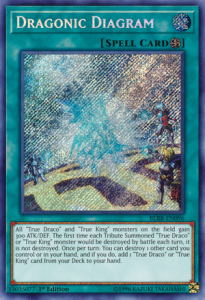 I went first, activating Light Stage and adding Lycoris to the hand. Next, I summoned Candina, grabbing a Reincarnation from deck. Then I set Reincarnation and Files to my backrow, used Lycoris’ eff to summon itself and bounce Candina, then ended my turn.
I went first, activating Light Stage and adding Lycoris to the hand. Next, I summoned Candina, grabbing a Reincarnation from deck. Then I set Reincarnation and Files to my backrow, used Lycoris’ eff to summon itself and bounce Candina, then ended my turn.
Opponent began their turn, taking 400 from Lyco/Stage. They set a card to their backrow, set a card to their Field Zone. Next they tributed Lyco for the summon of Gameciel. Next, they Special Summoned their own Dogoran to their field. Then, they Normal Summoned Fairy Tail – Luna, using its effect to add another Luna to hand. They attacked over Gameciel with Dogoran, then attacked directly with Luna, and ended their turn.
I began my turn drawing Slumber. First used Light Stage’s 2nd effect on their set backrow. Then I Activated Files, (commented on how this was an awkward matchup), then activated Slumber, destroying both monsters then summoning Radian (theirs) and Mecha-TK (mine). I summoned Candina, grabbing Lilybell, which then went to the field via its effect. Next I link summoned Underclock with Candina and Mecha-TK, then summoned Dogoran to the zone it pointed to. This put the first counter on Files. Then I used Underclock to reduce Radian to 0 ATK, and attacked with my three monsters for 4800 battle damage (and 200 eff dmg), triggering Lilybell in the process which added Candina back to hand again. In MP2, I Link Summoned Knightmare Phoenix with Lily and Dogoran, destroying his set Field Spell by discarding Candina and drawing a Lycoris. Then in the EP, Mecha-TK returned to my field in ATK position and I put the second counter on Files, and my opponent sent their set Pot of Extravagance to the GY.
The opponent started their turn, activated a Dragonic Diagram from hand. They then used its effect, destroying a Mariamne, the True Dracophoenix in hand and adding a True King Bahrastos, the Fathomer to hand. I chained Reincarnation to Mariamne’s effect, then chained Droll to seal the duel.
Duel 4 – Danger! Salamangreat
Spoiler
Opened: Kyoutou Waterfront, Trickstar Lycoris, Trickstar Lycoris, Leeching the Light, Interrupted Kaiju Slumber I went first, immediately ending my turn. Fun fun.
I went first, immediately ending my turn. Fun fun.
Opponent began their turn, activating Salamangreat Circle and getting a Salamangreat Gazelle to hand. They Normal Summoned Salamangreat Spinny, Link Summoned Salamangreat Veilynx. Veilynx activated its effect and Gazelle chained to summon itself, then they added Salamangreat Sanctuary to hand. Gazelle then sent Salamangreat Roar to GY. Next they activated Sanctuary, then Link Summoned Salamangreat Sunlight Wolf. Next they Link Summoned another Sunlight Wolf using the first, triggered Roar in their GY to set itself to the field. Then came Sunlight Wolf’s second effect, adding Circle back to hand. They set 1 card from their hand, then activated the effect of Danger!? Tsuchinoko?. I guessed correctly, discarding their Snek which summoned itself to their field to the zone that Sunlight pointed to. Sunlight’s first eff triggered, adding Gazelle back to hand. Next, they brought back Spinny with its effect, then Xyz Summoned Salamangreat Mirage Stallio. Mirage used its effect, summoning Salamangreat Jack Jaguar from the deck. Then he attacked with Wolf and Stallio for 3800 dmg, and ended their turn.
I began by drawing Gameciel. First, I used Gameciel to tribute away Wolf, preventing the use of Roar. Then I activated Waterfront. Next, I used Slumber, bombing the field and summoning Mecha-TK (theirs) and a Thunder King (mine). This put 4 counters on Waterfront, since Jizu, Stallio, Jack and Slumber was sent to the GY. So I used Thunder King’s effect, removing 3 of those counters from Waterfront. My opponent chained Effect Veiler. Next I normal summoned Lycoris, and Link Summoned Underclock from hand. This put 2 more counters on Waterfront, so I used its effect to search another Thunder King from deck. I then summoned Thunder King, then used the new copy’s effect, which was successful this time. Next came Leeching on their Mecha-TK, giving Clock and Thunder King 2200 extra ATK. Then I reduced Mecha-TK’s ATK to 0 with Underclock. Then I entered Battle Phase, and attacked Mecha-TK with Thunder King 3 times for 5500 damage each {just for overkill purposes} to win the duel.
Duel 5 – Rokket Guardragon
Spoiler
*Note that there were many significant misplays here by both my opponent and myself. All I can say is oops.*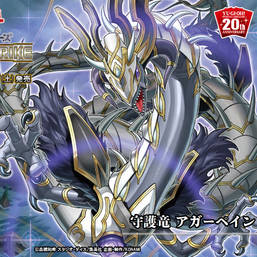 Opened: Droll & Lock Bird, Trickstar Lycoris, Interrupted Kaiju Slumber, Droll & Lock Bird, Leeching the Light
Opened: Droll & Lock Bird, Trickstar Lycoris, Interrupted Kaiju Slumber, Droll & Lock Bird, Leeching the Light
I went first, and again just ended my turn immediately.
Opponent started their turn, using Quick Launch in their Standby Phase to bring out Magnarokket Dragon. They then Link Summoned Guardragon Elpy after beginning MP1. They then activated Dragon Shrine, sending Destrudo the Lost Dragon’s Frisson directly to the GY. Next they activated World Legacy Guardragon, bringing back Magna, then chained a second copy of Quick Launch to bring out Shellrokket Dragon. Next he moved Elpy to the right hand side of an Extra Monster Zone before Link Summoning Guardragon Agarpain with Magna and Shell. With both arrows pointing to an empty zone, they Special Summoned Red-Eyes Darkness Metal Dragon from deck with Elpy, which then brought back Magna from the GY. They then attacked with all 4 monsters, dealing 7100 battle damage, then link summoned Triple Burst Dragon with the 3 monsters in their main monster zones before ending their turn.
Beginning my turn, I drew my copy of Jizukiru. At MP1, I activated Slumber, wiping away the two link monsters and summoned Thunder King (theirs) and Mecha-TK (mine). I Normal Summoned Droll for the lols, then link summoned Underclock. Then I Special Summoned Jizukiru to the zone Underclock pointed to. Next came Leeching, giving each of my monsters absurd amounts of ATK, then Underclock dropped his Kaiju to 0 so I could attack for game.
We moved to a rematch afterwards, with my opponent feeling upset about botching their opening play.
Opened: The Kaiju Files, Trickstar Candina, Leeching the Light, Pot of Extravagance, Radian, the Multidimensional Kaiju
Once again I was given the opportunity to go 1st, so I started with my Extravagance which gained me a Light Stage and Lily. To dodge Effect Veiler on my Candina, I activated Stage first, grabbing a Lycoris. Then I Normal Summoned Candina, grabbing a Reincarnation. I bounced Candina with Lyco, then set Files and Reincarnation, and ended my turn.
After taking the Lyco tax of 400 dmg, my opponent set a card from their hand, then Normal Summoned Gateway Dragon. They activated its effect, and I chained with Reincarnation hoping to disrupt their play from the start (he took 1000 dmg), but he still drew a Magnarokket to summon when Gateway’s eff resolved. Next came Foolish Burial, sending Red-Eyes Darkness Metal Dragon to the GY. Using their two monsters, Agarpain was Link Summoned once more. They then activated World Legacy Succession, bringing back REDMD. REDMD then brought back Magna with its effect, before they then used all 3 monsters to Link Summon Borrelsword Dragon. Borrel attacked over my Lycoris, inflicting 3000 LP. They ended their turn after setting a second backrow card.
For my turn, I drew another Candina. First, I locked down their newly set card with Stage. Then, I tributed away Borrel with my Radian. This is when the horrible misplays began. I summoned Candina, thinking way too far ahead for my own good, and added Trickstar Live Stage to hand. I activated Live Stage, getting Lycoris back from my GY. Then I tried to activate its 3rd effect before realizing I could not due to having summoned Radian earlier in the turn (as I said, this duel was painful). With no other plays available, I had to just end my turn.
My opponent wasted no time, setting their topdeck card then blind-activating a set Allure of Darkness. They drew into a Anesthrokket Dragon to banish, then flipped over a second copy of Allure, which banished a copy of Metalrokket Dragon. Next came a World Legacy Guardragon to bring back Magna, quickly followed by a Dragon Shrine to send a Destrudo to GY. My opponent paid 2700 LP to bring back Destrudo, then used Squib Draw on Magna to draw 2 more cards. Then, they Link Summoned Wee Witch’s Apprentice, attacked over Candina, and ended their turn.
I drew into Reincarnation, and once again thought much too far ahead than I should have. I used the 3rd effect of Live Stage, getting a token. Next I Link Summoned Bloom, giving my opponent a 3rd card in their hand, then used the 2nd eff of Live Stage to get another token (pointed to by Bloom). Then I went into my Extra to Link Summon Trickstar Holly Angel, only to realize I had banished it with Extravagance on the first turn. It was at this point that I realized I didn’t have any other Trickstar links left in the Extra, ending my Link Summon chain for the turn. I then made an additional misplay, summoning Lilybell to try and just manually take the remaining 2500 LP from my opponent. So I attacked directly for a pitiful 400 damage with Lilybell (due to Wee Witch), which then added my fallen Candina back to hand, bounced back Lily with Lycoris which then let Lily come right back to the field and attack for another 400 damage. The token attacked into Wee Witch, triggering bloom and inflicting an additional 600 damage to the opponent with bloom. After setting Reincarnation, I ended my turn with a Lyco, Lily, and Bloom on the field,
For those of you doing the math, my opponent had only 900 LP left after taking the 200 Lyco tax from starting his turn, but he only had 4 cards in hand so Reincarnation was not enough to seal the deal with Lycoris. Long story short, my opponent went big time Dragon combos and ended the duel with an attack from a Hot Red Dragon Archfiend Abyss on my 0 ATK Bloom. Moral of the story, look at your Extra before locking into summoning only Trickstars and make sure you can do proper math to ensure your opponent will lose to an all out attempt to deal enough effect damage.
Themed Tech Options:
- Set Rotation – Force your opponent to activate a Waterfront or get rid of it with Lightstage? Also just another copy of Terraforming practically for the start of the duel.
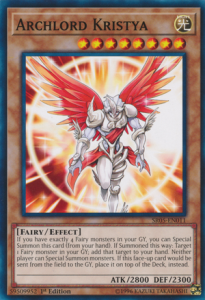 Archlord Kristya – Trickstars have much better GY manipulation that most give them credit for. Sure, you often want to be able to Special Summon yourself, but adding Kristya to a lockdown field early in the duel can allow for greater disruption of the opponent’s strategies.
Archlord Kristya – Trickstars have much better GY manipulation that most give them credit for. Sure, you often want to be able to Special Summon yourself, but adding Kristya to a lockdown field early in the duel can allow for greater disruption of the opponent’s strategies.- Honest – Serves as additional copies of Leeching the Light for the Kaiju-OTKs, but it can also be used on a Trickstar to keep it safely on the field.
- Trickstar Light Arena – While this card may be more useful to Link Trickstar builds, it can also find a home here to give yourself more flexibility in going for Link spam rather than just Kaijus as a win condition.
- Kaiju Capture Mission – To be used when you can all but assure that your opponent will destroy this set card and give you free card advantage.
- Hand Traps – You can obviously use more hand traps if you prefer, but I like to keep it simple in OTK-heavy builds like this. You can easily break boards, you don’t need to rely upon disruption your opponent with Kaijus.
- Trickstar Fusion – With Trickstar Band Sweet Guitar, you can go for some cool Trickstar plays. This does work best in a pure build, but it can be teched in here if need be, but Guitar doesn’t play all too well with Extravagance.
- Foolish Burial Goods – Feel free to use this with Reincarnation or Slumber for cheeky GY activation. Would recommend if you are going the Fusion route.
- Super Anti-Kaiju War Machine Mecha-Dogoran – Earlier in the article I didn’t recommend this guy, but in further testing, if you run more of the Kaiju monsters, you can get away with running 1 copy of this guy. He works best when you Link combo while having a face-up The Kaiju Files or Waterfront, but it is very much up to personal preference.
Why Not Crusadia?
Early in the article, I mentioned that Trickstar were better at pairing with Kaiju than Crusadia, and I wanted to take the last paragraph to unpack that sentiment and take one final stab at convincing you why the Trickstar work well in here. To be clear, Crusadia are a really cool OTK-focused deck, using a variety of different generic support cards alongside their streamlined OTK pattern to do some amazing things. While Crusadia builds will benefit from pointing to a Kaiju (pretty much every build does nowadays), they have their own methods for OTKing the opponent. The main difference is that it is a bit more Extra Deck-reliant than the Kaiju OTKs that this article’s build is known for. Lastly, with the Crusadia, you lose the ability to run Extravagance consistently, plus you want to spend more of your slots on Crusadia monsters just to ensure that you have access to the Crusadia plays.
The other piece of my argument is that since Crusadia is such an OTK-machine and doesn’t really do too much else, you basically give up any power plays if you end up getting the short end of the stick with the first turn of the duel. Sure, you can sit on an Equimax, and yes you can do so with many combinations of cards in the opening hand. But is that really enough to stop an opponent that’s hell bent on crushing your LP as soon as possible? As a result, if you want to run a Crusadia build, I highly recommend throwing them with some dragons and making the Guardragon variant that can pull off some really cool combos even on turn 1, but I would not recommend trying to make a Kaiju-focused variant with them. At the end of the day, remember that there is a fine line between teching in a couple of cards as a support engine (Slumber + a handful of Kaijus) and relying upon the Kaijus as your win condition.
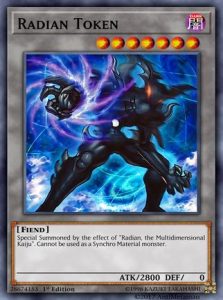
Conclusion:
If you came to read this article expecting a performance full of sparking fairies and giant monster battles, I hope you enjoyed the show. If not, I’ll just take a bow and sign off. Either way, I hope that you can start opening your eyes to the potential that the Trickstar theme can bring to even the most thematic of archetypes. It may have been overused in competitive, but this theme can evolve to survive and work its way back into the hearts and minds of the competitive scene in a post Savage Strike and F/L list metagame! With that, I hope you try out this build and reenact your best destruction of the city act.
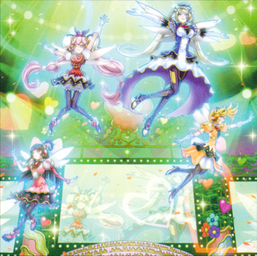
Reminder, I also take suggestions for future CDS articles! I really want to see some input from you! This article is in response to a request for a more competitive CDS article, with innovation upon an already competitive theme. While I will (hopefully) not run out of cool ideas, I do want to be writing articles about strategies you are interested in. So if you wish to see a CDS article about the archetype, theme, or strategy you love, feel free to private message me on the YGOrg Discord server, the YGOrganization Forums, or just post a comment in response to this article on our Facebook page with your ideas to keep under consideration. On most YGO-related communities my username is Quincymccoy, so feel free to reach out.

